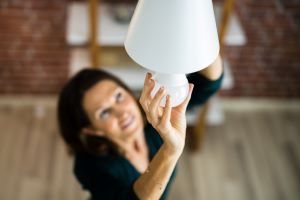When you’re looking for a light fixture for your home, you’ll come across numerous bulb types. However, the current hot item in the lighting industry today is LED lighting. You’ve seen it everywhere, but you probably don’t know much about these little lights and why they’re so popular.
This article discusses what a LED light is and enumerates the several pros and cons of this type of lighting.

What Exactly Are LED Lights?
LED means light-emitting diode. A diode is an electrical component or device with two electrodes through which electricity flows. When voltage is applied to the two leads, electrons move around and create light. In comparison, a traditional incandescent lamp lights up when an internal filament is heated while a compact fluorescent bulb flows when electrical current runs through the gases inside the tube.
If you’re looking for a supplier, Airis LED lighting in Miami has become the go-to provider for residential LED lighting products for over 20 years.
Pros Of LED Lights
- Long Lifespan
This is perhaps the most significant advantage of LED lighting for your residential home compared to other lighting solutions available. The average LED can last for 50,000-100,000 hours or more. This is 2-4 times longer than other lights such as fluorescent or sodium vapor lights. And it’s 40 times longer than your average incandescent light bulb.
This long-life means you won’t have to buy many of them over the years. It also means you can cut down on labor costs for maintenance and replacement.
Another pro of LED lights for your residential home is they’re more durable. Since LEDs aren’t made from fragile materials like glass, they can withstand more than fluorescent and incandescent bulbs. This means they’re not easily broken during installation or shipment.
- Energy Efficiency
LEDs consume very low amounts of power. It’s estimated that LED light offers up to 90% energy efficiency compared to incandescent light bulbs. This means that about 90% of the electrical energy is converted to light with only 10% lost as heat. In contrast, incandescent light uses 10% of energy for light conversion and the remaining 90% is lost to heat.
Using less energy for your home means that even your monthly electricity bill will go down with a significant amount.
- Environmentally-Friendly
Using LED lighting for your home allows you to become eco-friendlier. For one, LED light doesn’t contain mercury like CFL and mercury vapor lights. So, when it’s time to dispose of your LED light, there won’t be serious contamination in the landfill.
Most LED lights can also be recycled. So, it’s a good idea to contact your local recycling center or manufacturers with recycling programs if they’re accepting LED lights.
As mentioned before, LED light is also energy efficient. And any technology that doesn’t consume a large amount of energy is actually good for the environment.

Cons Of LED Lights
- Pricey
The biggest disadvantage of a LED light is its price. Since LED lights can last for a long time, it’s priced a little higher than fluorescent and incandescent lamps. When computing the cost, you’ll definitely save more with LED light than other types of light in the long run.
However, if you’re replacing all your incandescent or purchasing at least a dozen LED lights for your home’s exterior, then the upfront cost can drain your wallet. In general, LED lights can cost between $10 and $40 each. Incandescent lights can cost less than $3.
- Not Good Under Heat
LED light is sensitive to high temperature levels. High temperatures will inhibit the proper functioning of the LED lamp or can shorten its expected lifespan. In general, you can keep your outdoor LED lights protected with a sconce or lampshade.
- Color Limitations
Another con of using LED lighting in your home is its ability to create white light. In general, a LED light will create white light using diodes of varying colors that when illuminated together makes white light. However, it can sometimes cause the light to be a bit bluish.
In addition, as your LED light nears its lifespan, they sometimes degrade in terms of color quality. And in poorly designed LED lights, this can also lead to loss of brightness, flickering, and unbalanced light.
Conclusion
As you can see, like most things, LED lights don’t come with disadvantages. With that said, the pros of LED lights far outweigh the cons, making them quite popular for lighting up homes. With its energy efficiency, eco-friendliness, longer lifespan, and durability, LED lighting has already paid for itself!











